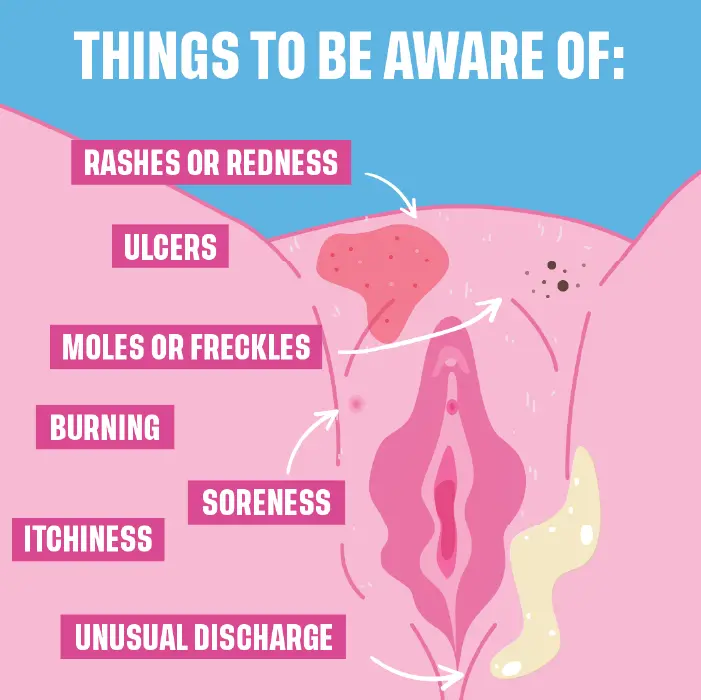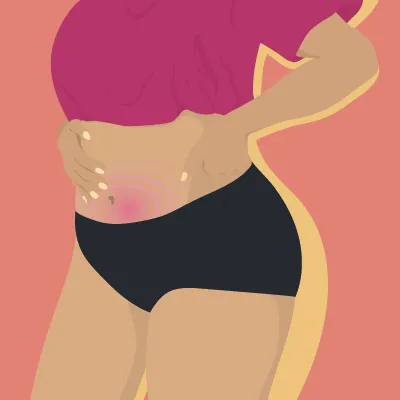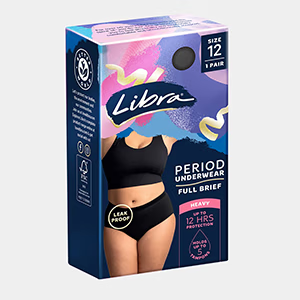Aug 21, 2024
Vulva 101: Anatomy, Self-exams & Things To Look Out For
Just because you have a vulva doesn’t necessarily mean you know much about what’s going on down there. Even if you’re pretty well-acquainted with your vulva from periods, masturbation, or sex, you mightn’t have a clue which part is where – or the signs to look out for that something’s a bit off. So, get comfy and grab a hand mirror. We’ll walk you through the anatomy of your vulva, how to do a self-check, and potential issues to be aware of.
Who, what, where?
The vulva and vagina are not the same thing, but they are both parts of your genitals. Your vulva is what you see externally: your vagina is internal. Learn more about the differences here. The bits that make up your vulva are:

- Mons pubis: the fleshy part above your vulva, where your pubic bone sits. Unless you shave, wax or have laser hair removal, it’s usually covered in pubic hair.
- Labia majora: the outer lips. It looks like fleshy skin around your vagina and has pubic hair.
- Labia minora: the inner lips. These vary in colour, shape, and size. It starts at your clitoris and ends at the base of your vaginal opening. (P.S. Everyone’s labia minora looks different, so there’s no “normal” way it should appear.)
- Clitoris: spongy tissue that is beneath the clitoral hood. It’s located at the top of your labia minora, where the lips meet. It can vary in size (and become larger when you’re aroused), but one thing’s for sure – it’s really sensitive!
- Urethral opening: a tiny hole that urine comes out of.
- Vaginal opening: a larger hole that’s directly beneath your urethral opening. Things can go in (tampons, period cups, fingers, sex toys, and penises) and things can come out (menstrual blood, discharge, and babies).
Go on, take a look
For whatever reason, many people feel shy or fearful about looking at their vulva. We promise it won’t give you a jump scare!
It’s important to examine your vulva semi-regularly (a few times a year or more often if you’re changing sexual partners) to know what looks and feels regular for you. It’s also wise to do one if you sense that something unusual is going on. Itching, burning, stinging, or any kind of discomfort are signs that you need to check out your vulva.
Your vulva’s shape, size, and colour are unique to you: who better to monitor it than you? If you haven’t done a vulva self-exam before, here’s what to do:
- Sit or stand somewhere comfortable and well-lit. If you’re sitting, spread your knees apart. If you’re standing, take a deep squat.
- Use a large hand mirror to see what’s going on.
- While looking into the mirror, use your fingers to feel around. Separate your labia minora to see your vaginal opening properly.
- While you’re down there, check your anus and inner thighs, too.
If you’re unable to complete a self-exam yourself, consider asking a person you trust to do it for you. Alternatively, you can go to your GP for an examination.
Keeping your vulva clean
Unlike your multiple step skincare routine, keeping your vulva clean is pretty simple. Start by gently washing with warm water during your shower or bath. Using a sensitive PH balancing wash is great, just make sure you avoid harsh soaps or douching, as these can disrupt your natural balance and potentially lead to infections.
After washing, consider using a breathable liner from our ProSkin range. These liners are perfect for various situations, from the tail end of your menstrual cycle to days with increased discharge. They keep your underwear protected while allowing your skin to breathe. What sets our ProSkin liners apart is their innovative topsheet. It contains a mild lactic acid infusion, which helps support your vagina’s natural pH balance. This feature promotes overall comfort and freshness throughout your day.
Things to be aware of
Your vulva’s appearance will change over time, particularly during puberty, after pregnancy, and post-menopause. That’s normal and to be expected! However, if you notice changes that you’re unsure about, it’s a good idea to speak to your GP. This could be signs like:
- Rashes or redness
- Lumps or bumps
- Moles or freckles
- Unusual discharge
- Ulcers
- Soreness
- Itchiness

If you notice any of these signs, it’s super important to discuss them with your GP. They could potentially be symptoms of concerns such as sexually transmitted infections, skin disorders, cysts, or other gynaecological conditions. Keep in mind that it’s also possible for it to be something far less serious – like a pesky ingrown hair. Either way, it’s better to be proactive and tell your GP about it if you’re concerned.
By staying up to date with what’s going on down there, you can feel confident that you’re looking after your vulva’s health. Once you’re familiar with your vulva’s characteristics and what’s regular for you, you’ll be better equipped to observe and monitor any changes.
Love, Libra x
Essity Australasia makes no warranties or representations regarding the completeness or accuracy of the information. This information should be used only as a guide and should not be relied upon as a substitute for professional, medical or other health professional advice.







